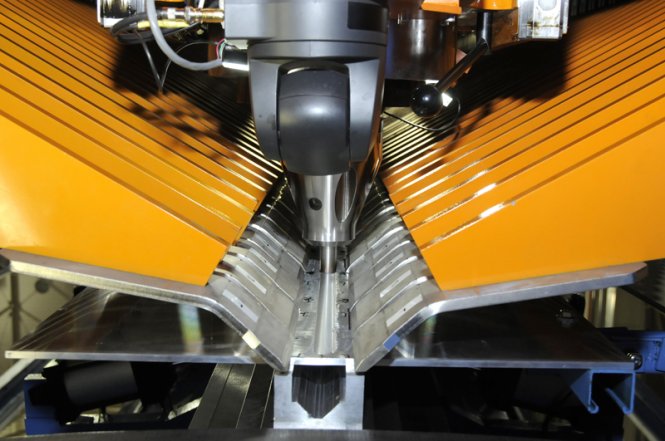 |
| photo by NASA's Marshall Space Flight Center |
But friction is not all bad. Before we had indexed shifting systems on bikes (yes kids, shifters used to not "click"), there was good old downtube friction shifting. Pull the lever and the derailleur shifted. Push the lever and the derailleur shifted. It was simple, elegant and bomb proof. But more than anything, it was a direct connection between the rider and the drivetrain. The rider had to get the derailleur in the right spot not to make noise, The rider had to learn where the gears were in order to shift smoothly and cleanly.
Index shifting has introduced a level of convenience and dependability to cycling that allows the newest rider to shift cleanly and smoothly. By eliminating the learning curve for clean shifting, however, it introduces a level of abstraction between rider and machine. The beginning rider understands less and less what is happening in the drivetrain. The race to incorporate electronics into this equation introduces and even greater level of distraction.
I have ridden the new Shimano Di2 electronic group. I've also ridden bikes equipped with Mavic Mektronic, Mavic Zap and I've even seen a mountain bike that had a Browning Automatic Transmission on it. Di2 is remarkable not just in the fact that it works (unlike any of the Mavic attempts - at least in terms of reliability), but that the shifting is so extremely precise and requires no thought on the part of the rider. I rode it trying every dumb shifting combination and technique that usually results in a thrown chain or missed shift and it handled it flawlessly.
This means that the rider can now buy perfection rather than seek it within themselves. I don't think of this as a step forward. There are trials and tribulations that we have to go through in order to initiate ourselves into things. We must be cautious about offloading the difficult things to technology. I am no Luddite, but I fear a loss of intimacy with the things that we love and depend on. The only upside to the electronic shifting movement is that the cost is still prohibitively high, but the trickle down is coming soon. Within this decade, it is safe to assume that electronic shifting will become the most common form of shifting on bikes (at least road bikes).
If you ever get the chance, take a bike that has friction downtube shifters out for a spin. Feel those tiny, elegant levers move smoothly through their range of motion. Notice the fluid sweep of the derailleurs as the move fluidly with the lever. Note the quietness of the shift and the different tones of chain on cogs as you adjust the shift to the perfect position, known by the lack of noise coming from the chain on the cog. It is a simple, beautiful thing and it will be gone before you know it.
2 comments:
My first road bike 1983 Fugi, had friction shifting. It was a cool feeling to get the shifting just right without any grinding. My next bike in around 1988 had index shifting and I thought I had died and gone to bike heaven.
Point that bike up a hill, and GRAVITY will slow you down.
Post a Comment